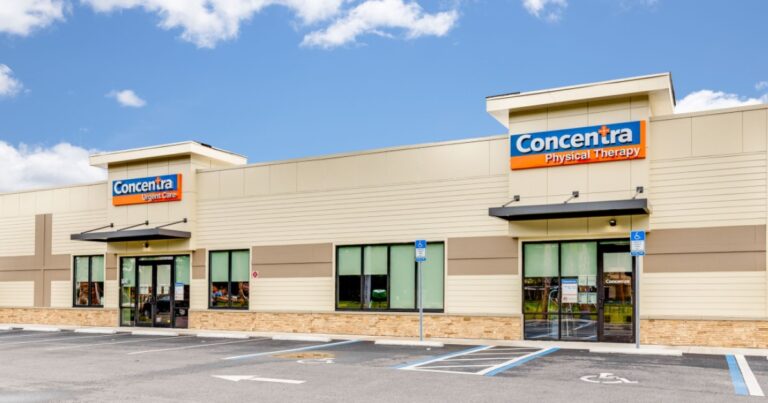Best Practices for Managing Access to Sensitive Areas in Hospitals and Clinics
Navigating the complexities of healthcare requires more than just managing patient care; it’s about ensuring that sensitive areas within hospitals and clinics remain secure.
With the increasing focus on patient safety and data protection, healthcare administrators and facility managers must prioritize access control. In this blog post, you’ll discover best practices for managing access to sensitive areas, ensuring the seamless operation of healthcare facilities.
Assessing Security Needs
Understanding the specific security needs of a healthcare facility is a vital first step. Different areas within hospitals and clinics have varying requirements for access control. Sensitive zones such as operating rooms, data storage areas, and pharmacy units demand high levels of security. Facility managers should conduct comprehensive assessments to identify these critical areas. Engaging with security consultants can provide insights into potential vulnerabilities and help tailor security solutions.
Implementing Access Control Systems
Access control systems are at the heart of securing sensitive areas. These systems range from traditional locks and keys to advanced digital solutions. For modern facilities, smart lock door systems offer enhanced security features.
These systems not only track entry but also provide customizable access levels for different staff members. Integrating biometric verification adds an additional layer of protection, making it nearly impossible for unauthorized individuals to gain entry.
Training and Awareness
Even the most advanced security systems can be ineffective without proper training. Staff should be well-versed in the operation of access control systems and understand the importance of maintaining security protocols.
Regular training sessions can keep security measures fresh in employees’ minds. Additionally, creating a culture of security awareness ensures that everyone, from janitors to surgeons, understands their role in safeguarding sensitive areas.
Regular Security Audits
Conducting regular security audits is essential for maintaining the integrity of access control systems. These audits should evaluate the effectiveness of current security measures and identify areas for improvement.
Facility managers should collaborate with IT departments and security experts to perform these assessments. Frequent audits help in adapting to new threats and ensure that the facility remains a safe environment for patients and staff.
Utilizing Technology
Technology plays a critical role in modern access control strategies. Installing surveillance cameras in strategic locations can deter unauthorized access and provide evidence in case of breaches. Additionally, integrating access control systems with building management software allows for real-time monitoring and reporting. Technology not only enhances security but also streamlines operations, allowing facility managers to focus on patient care.
Managing Visitor Access
While controlling staff access is crucial, managing visitor access requires equal attention.
Visitors must be screened and logged before entering sensitive areas. Implementing visitor management systems can automate this process, ensuring that only authorized individuals are allowed entry. Personalized visitor badges with time-limited access ensure that visitors can only enter designated areas for the duration of their visit.
Emergency Protocols
Emergencies such as fires or medical crises require swift action and often involve multiple personnel accessing sensitive areas. Having clear emergency protocols ensures that during such events, security does not become compromised. Emergency access procedures should be clearly outlined and regularly practiced.
Training sessions for emergency situations can prepare staff for maintaining security while addressing urgent needs.
Creating a Security Culture
Building a security culture within the healthcare facility is as important as the physical security measures themselves. Employees should feel responsible for the security of their environment. Encouraging open communication about security concerns can help identify potential risks early. Rewarding staff for proactive security measures fosters a sense of ownership and commitment to maintaining a safe space for all.
Legal and Compliance Considerations
Adhering to legal and compliance standards is non-negotiable in healthcare security. Regulations such as HIPAA in the United States mandate strict controls over access to patient records and sensitive areas. Facility managers must stay informed about relevant regulations and ensure that their security measures align with these requirements. Regular compliance checks and updates to security policies can prevent legal issues and protect the facility’s reputation.
Evaluating and Updating Security Measures
Security is not a one-time setup but an ongoing process that requires evaluation and updates. Changes in technology, staff, and facility layout necessitate regular reviews of security protocols. Facility managers should keep abreast of advancements in access control technology and be prepared to implement upgrades. Collaborating with security experts ensures that the facility remains at the forefront of safety and protection.
Conclusion
Managing access to sensitive areas in healthcare facilities is a complex task, requiring a blend of technology, training, and culture. By implementing robust access control systems, conducting regular audits, and fostering a security-conscious environment, healthcare administrators can ensure the safety and efficiency of their operations.
For those looking to enhance their facility’s security, considering advancements like smart lock door systems can offer significant improvements. Protecting sensitive areas is not just about safeguarding assets; it’s about ensuring the well-being of patients and staff alike.
Healthcare Compliance







